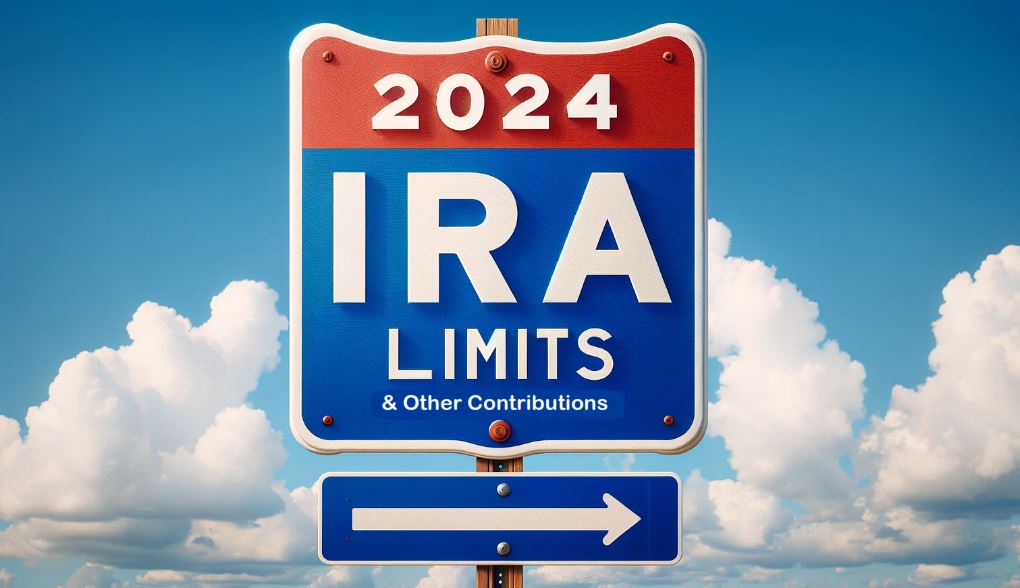Proactive tax planning throughout the year is the key to reducing taxes and maximizing your after-tax dollars for wealth accumulation. This is accomplished by applying changing tax laws to your specific situation. The IRS generally raises the income and contribution limits according to cost-of-living adjustments. The Consumer Price Index (CPI) was 6.5% for 2022, but with interest rate rising in 2023, inflation declined to a much milder 3.1% through November 2023 over the preceding 12 months. Each year the IRS provides updates to many key limits based on the prior year’s inflation that impact tax deductions, contributions, and other deferrals throughout the year. Below are some changes made for 2024:
Employer Retirement Accounts:
Elective Deferrals for 401k, 403b, and 457 Account Limits
Increased to $23,000 ($22,500 in 2023) while the catch-up is still at $7,500 for a total contribution of $30,500 for individuals 50 and older. This was one of the smallest increases in 2024 at only 2.2%.
Defined Contribution Limits
Increased to $69,000 ($66,000 in 2023), which is the total combined contributions by employee and employer. The $7,500 employee contribution catch-up is on top of this, so the total for those 50 and older is $75,500.
Maximum Includible Compensation Limit
Increased to $345,000 for 2024 ($330,000 in 2023), which is always five times the Defined Contribution annual limit. This applies to the amount of annual compensation that can receive a company match.
Defined Benefit Limit
Increased to $275,000 for 2024, which was previously at $265,000 in 2023. This is the maximum compensation that can be used toward calculating a pension benefit.
Simple IRA Contribution Limits
Increased to $16,000 for 2024 ($15,500 in 2023). This is the third consecutive annual increase while the catch-up contribution remains at $3,500.
Individual Retirement Accounts:
Roth IRA and IRA Contribution Limit
Increased to $7,000. Another $500 annual increase and a 7.7% increase from 2023 with the annual. However, the $1,000 catch-up for those 50 years or older stays put.
Roth IRA AGI Phaseout
The phaseout for Roth IRA contributions increased roughly 5.5% with the new 2024 Adjusted Gross Income (AGI) phaseout of $230,000-$240,000 for Married Filing Jointly (MFJ). The AGI phaseout for single taxpayers is $146,000-$161,000.
For instance, if your 2023 MFJ AGI was $223,000, which was in the middle of the phaseout range last year, you were only able to contribute $3,250. However, if you receive a standard 3% pay increase, then your 2024 AGI would be $229,690, and you would be fully under the phaseout range in 2024. Therefore, you would instead be eligible for a $7,000 Roth contribution in 2024.
Deductible IRA Contribution Phaseout
AGI phaseout amounts for active participants is as follows:
- Single – $77,000-$87,000
- Married Filing Jointly – $123,000-$143,000
- Married Filing Separately – $0-$10,000
AGI phaseout for a non-active participant married to an active participant:
- $230,000-$240,000 (same as Roth IRA MFJ)
Other Notable Limit Changes:
Qualified Charitable Distributions (QCDs)
Individuals age 70½ or older may transfer dollars from their Individual Retirement Accounts (IRA) directly to qualified charitable organizations tax-free. Since QCDs were enacted in 2006, the annual limit of this tax-free transfer has been steady at $100,000. However, effective in 2024, the limit will be increased along with inflation just like most of the other annual limits and will be $105,000 for 2024.
Estate and Gift Tax
Annual family gift tax exclusion $18,000 (5.9% increase from 2023 and the third consecutive year)
Estate and gift tax exclusion $13,610,000 (5.3% increase from 2023)
Health Savings Account Contribution Limits
Single $4,150 (7.8% increase from 2023)
Family $8,300 (7.1% increase from 2023)
Catch-up age 55 and older $1,000
Flexible Spending Account (FSA) Contribution Limits
$3,200 (8.2% increase from 2023 – $3,050)
Standard Deduction
Single $14,600 (5.4% increase from 2023)
Married filing jointly $29,200
Blind and elderly additional deduction is $1,550 or $1,950 if unmarried)
Who’s helping you?
At Total Wealth Planning we help our clients every day answer these important and at times stressful questions.
About the author
Chris Allen, CFP® is a wealth advisor at Total Wealth Planning, a fee-only fiduciary financial planning firm in Cincinnati (Blue Ash), Ohio. Chris assists clients in creating a sound financial future while serving on the Firm’s Investment Policy Committee and technical financial planning team. Prior to joining the Firm in 2015, Chris worked as a Certified Financial Counselor with a non-profit financial counseling organization, where he consulted with numerous families and helped establish sustainable spending plans. Chris can be reached at callen@twpteam.com.







